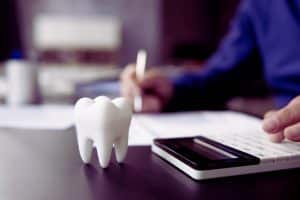Dear fellow dentists, in the realm of dentistry, we all know our days are often a delicate balance between providing quality patient care and managing the number of administrative tasks that come with running a successful practice. Striking this balance is essential not only for our patient’s well-being but also for our practice’s growth. As someone who has navigated these waters, I’m here to share insights and strategies to structure a daily schedule that optimally combines patient care and administrative efficiency.
1. Effective Time Management Apps for Dentists:
Start by exploring time management apps tailored to dental professionals. Apps like Dentrix, Curve Dental, or CareStack offer integrated scheduling features, helping you manage appointments, patient records, and treatment plans efficiently. Additionally, consider adopting communication platforms like Dentma or Lighthouse 360 to streamline patient reminders and notifications. Utilize general productivity apps like Todoist, Asana, or Trello to create task lists and set reminders for both clinical and administrative tasks.
2. To-Do Lists:
Craft a daily to-do list that balances patient care and administrative duties. Prioritize tasks by urgency and importance, and consider using techniques like the Eisenhower Matrix to categorize tasks. Moreover, experiment with task batching to streamline similar activities and enhance overall efficiency. Try the Pomodoro Technique, using apps like Focus Booster or Pomotodo, to structure work intervals and breaks effectively.
3. Optimizing Patient Appointment Scheduling:
Incorporating technology into your daily routine can significantly enhance efficiency. According to a survey conducted by Dental Economics, practices that adopted digital solutions reported a 35% reduction in time spent on administrative work. For instance, you can implement an online appointment scheduling system, like Zocdoc or Solutionreach, allowing patients to book appointments at their convenience while reducing the front desk workload.
4. Utilizing Time-Blocking Strategies:
I personally apply that in my daily life, and I assure you it works. Use your calendar app (Google Calendar, Outlook) to time-block various activities, dedicating specific chunks of time to patient care, paperwork, team meetings, and personal time. Consider color-coding different types of tasks for easy visualization. One important note is that studies show that patients tend to be more receptive and alert during the mornings, so try to reserve this time for patient appointments and procedures.
5. Prioritizing Patient Care:
According to a study conducted by the American Dental Association, patient care activities typically constitute about 60-70% of a dentist’s daily tasks. This emphasizes the significance of dedicating a substantial portion of your day to handle that. Apply the concept of “golden hours” – identify the times when you’re most energized and focused for patient interactions, and allocate them for appointments and procedures. Explore telehealth solutions for follow-up consultations or quick check-ins, reducing the need for in-person appointments.
6. Delegating Administrative Tasks Efficiently:
Train your dental assistants to handle administrative duties such as appointment confirmations, insurance verification, and patient communication. According to a survey by the Academy of Dental Management Consultants, practices that delegated these tasks reported a 25% reduction in administrative workload for dentists. To facilitate this process, you can use collaborative platforms like Slack or Microsoft Teams for streamlined team communication on administrative matters.
7. Managing Paperwork and Documentation:
Digitize patient records using Electronic Health Record (EHR) systems like Denticon or Dentrix Ascend, reducing paperwork and streamlining information retrieval. This transition to digital not only saves time but also ensures data security and accessibility. Adopt a consistent file naming convention for digital documents to enhance organization, making it easier to locate specific patient information swiftly and efficiently.
8. Balancing Work and Personal Life:
While dedicating ourselves to patient care and practice management is crucial, maintaining a work-life balance is equally important. Allocate specific time slots in your schedule for self-care and rejuvenation. A study published in the Journal of the American Dental Association found that dentists who maintained a balanced lifestyle reported lower levels of burnout and higher job satisfaction. Set clear boundaries for work hours, using tools like RescueTime or Screen Time to monitor screen usage and maintain a healthy work-life balance. Experiment with a “no work email after a certain time” policy to prevent burnout.
9. Regularly Reviewing and Adapting Your Schedule:
Set up weekly or monthly reviews to assess if your schedule adapts to your routine. Make necessary adjustments to optimize your time allocation. Use analytics features within practice management software to analyze patient flow and identify potential bottlenecks. It’s crucial to remain adaptable and continuously evaluate the effectiveness of your schedule. One advice here is to utilize patient feedback surveys to ensure that your patient care remains exemplary.
10. Mindfulness and Time Awareness:
If you enjoy meditation, use this powerful practice to settle. Mindfulness techniques enhance your awareness of time and improve focus during patient interactions and administrative tasks. That also can lead to better patient communication and more efficient procedures. Consider apps like Headspace or Calm for guided mindfulness and meditation sessions, integrating moments of tranquility into your daily routine. By grounding yourself in the present, you can navigate the demands of your dental practice with heightened clarity and composure.
Creating a well-structured schedule is an ongoing journey of trial and adjustment. By exploring these topics, incorporating appropriate apps, and implementing effective strategies, you’ll be better equipped to manage patient care and administrative tasks while maintaining your well-being. Remember, the goal is not just efficiency but a holistic and balanced approach to your professional life.
If you need more insights and tips related to dental practice management, explore our blog here.




